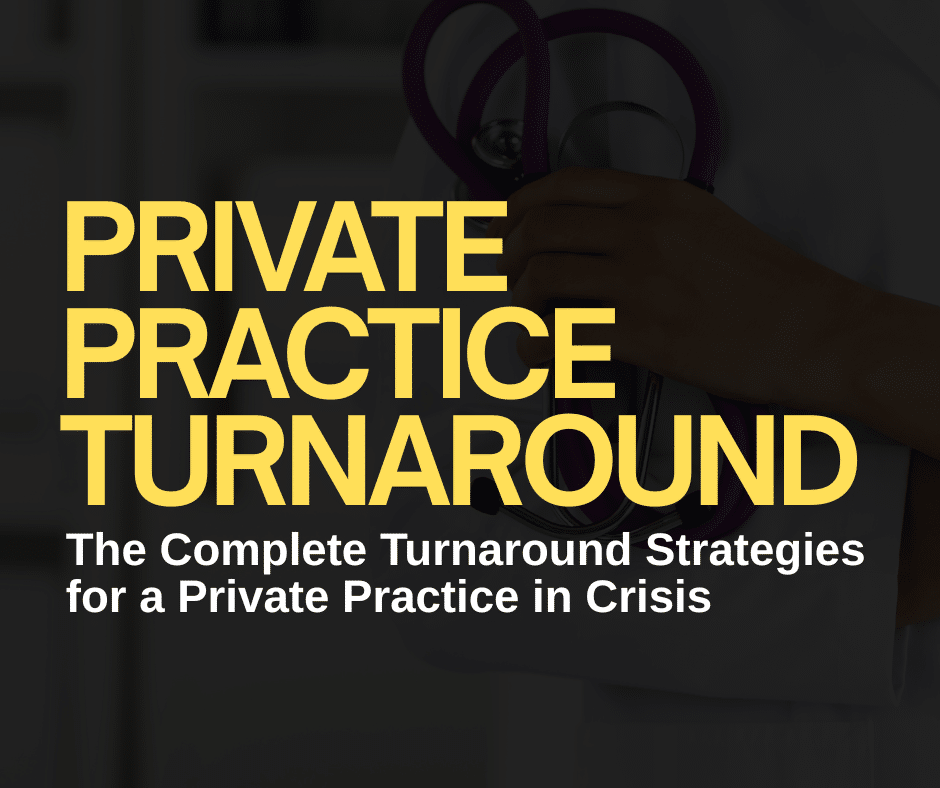In today’s medical practices, overhead is somewhere between a staggering 60% and 70%. Overhead has “increased substantially…with reimbursements dropping, malpractice costs rising and salaries for employees increasing.” Most physicians find themselves launched into the “business management” role of their practice without the benefit of any training about the business side of healthcare.
I imagine the cold sweats physicians break out into at the thought of losing the ability to do the work they’ve trained so long and hard for. Nearly half of us worry about being unable to practice medicine due to an illness or injury.
And the incredible weight of debt we all start our careers, which only adds to our determination to work hard and work well in order to get ahead financially for our families and us. Part of the business side of healthcare for all of us is understanding if and when we should invest in disability insurance.
What type of insurance? What’s important to know before signing up for a disability insurance policy? How old should you be when applying for a disability insurance policy?
How To View Disability Insurance
First of all, let’s learn how to view disability insurance. This form of insurance replaces your income if you become ill or injured and find you cannot perform your work.
While this sounds simplistic, the details can be incredibly complicated and feel overwhelming. It takes some work to understand the most important details about this type of insurance, especially for physicians and doctors.

The right disability insurance policy will allow you to “continue to pay for things like your:
- Mortgage
- Car loan
- Student loans
- Other expenses”
Not all insurance policies are the same, as they “vary greatly, based on the
- Quality and rating of the insurer
- The definitions of disability they offer
- The maximum benefit limits available
- Their premium rates.”
When considering and evaluating any disability insurance policy, you’ll want to read the fine print closely to understand the individual policy’s:
- Definition of insurance
- The costs of coverage
- Additionally available riders
Definition of Disability
The American Medical Association (AMA) suggests that physicians need to pay attention to the definition of disability in individual policies as this will determine how claims for benefits are judged. Various definitions of disability have significant differences between them.
Specialty own-occupation. Also known as “own-specialty occupation,” this means you are qualified to get benefits if an illness or injury makes it impossible for you to perform the duties of your own medical specialty, as opposed to some other jobs in the medical profession.
Own-occupation. Also known as “true or pure own-occupation,” this is a more specific type of form of a total disability. Under this type of policy, you would be paid benefits if you weren’t able to perform the “material and substantial duties of [your] occupation.” You would be able to receive full disability benefits even if you transitioned into another occupation.
Modified-own occupation. The most common type of disability insurance, it usually pays benefits if you can’t perform the “material and substantial duties of [your] occupation” and are not able to work in your chosen profession or any other type of work.

Any occupation. Although modified-own occupation is the most common type of disability insurance, “any occupation” is the most general definition of disability. This is the type of policy found in employer group policies.
In this definition, you can receive benefits only if you cannot work in a profession you’re educated, trained, or experienced in. Physicians and doctors may find it hard to collect benefits under this type of policy as we are well-educated.
Presumptive total disability. Most policies contain a section that defines “presumptive total disability,” If you qualify for this disability, you will bypass the typical fight between any parties involved — you, your doctor, the disability insurance company, and any lawyers involved in the case.
One example of this type of disability policy includes a description of their definition of a presumptive total disability as “total and permanent loss because of your injury or sickness, of one of the following:
- Speech
- Hearing in both ears, not restorable by hearing aids
- Sight in both eyes*
- Use of both hands
- Use of both feet, or
- Use of one hand and one foot
*Both eyes must measure at or below 20/200 after reasonable efforts are made to correct their vision using the most advanced medically acceptable procedures and devices available.
The Costs Of Coverage
The price or “premium” of an individual physician disability income insurance policy is based on a set of factors. These may include the insured’s:
- Age
- Gender
- Monthly benefit
- Waiting period
- Optional riders
- Occupational classification
As with most insurance policies, the younger you are, the lower the premium. Policies that include more specific definitions cost more than those that offer a broader definition of disability. The type of plan being purchased also influences the cost.

Group coverage policies. These types of policies are less expensive than some, but they have a broad definition of disability and provide the least amount of coverage.
Individual plans. They typically offer a level premium guaranteed for the policy’s life but may be more expensive. They are also considered noncancellable; the coverage and rates are locked in and can’t be canceled in the future.
Association plans. These plans are another option for physicians seeking disability insurance. They tend to be less expensive in the policy’s early years, but rates will increase as the policyholder gets older. Typically available on a guaranteed renewable basis, association plans are guaranteed to remain in force, but the rates are subject to change.
When deciding which disability insurance plan is right for you, it’s important to consider the duration of your coverage, which ranges from short-term policies that provide temporary benefits to long-term policies that cover you until age 65 or longer. Additionally, you should review the features offered by different insurers before making a decision about which policy to purchase.
Additionally Available Riders
Many insurers offer riders, such as the return of premium riders, which allow you to receive back premiums paid if you don’t end up filing any claims during your policy term. Some insurers may provide additional benefits such as reimbursement for medical expenses or providing replacement income if you suffer from an illness or injury.
In general, you’ll need to experience a loss of income of 20% or more when compared to any pre-disability earnings. If the loss of earnings is more than 75% or 80%, 100% of the monthly disability benefit might be paid, depending on the rider’s provisions.

Catastrophic disability rider. The common standard for this type of rider is when the insured, due to injury or illness, cannot “perform two or more activities of daily living without human standby assistance, or if the insured suffers a cognitive impairment or an irrevocable disability.”
Cost of living adjustment rider. With today’s rollercoaster economy, this can be a helpful rider. Once a disability has lasted for 12 months, benefits will be adjusted for inflation. The adjustment can be a flat percentage, or it can be tied to the consumer price index.
Future increase option rider. This option rider lets you increase your disability coverage, no matter what health concerns come up in the future. Knowing when and by what increments coverage can be increased on any given option date is important.
Policy Terms To Consider
There are other policy terms you’ll want to consider as you shop for the right disability insurance policy for you and your family.
Tax implications. If you pay the insurance premiums for your disability policy with after-tax dollars, you won’t need to pay any further tax on the insurance benefits, which is often the case if you buy an individual policy.
On the other hand, if your employer provides coverage after they take a tax deduction for the premiums, you’ll need to keep track of and remit the appropriate amount on your tax return. This amount could be as much as 33% of the benefits received.

Mental and nervous provision. Often called M&N, if a mental disorder or substance abuse issue causes a disability, the provision can exclude or limit coverage. If a disability is triggered by an M&N condition, a two-year restriction is often placed on the benefits to be paid.
Loan payoff provisions. There are disability plans that offer benefits to help the insured party pay off their student loans if they qualify as disabled. The provision allows for an additional $150,000 to $250,000 to be paid on top of the monthly benefits paid.
Maximum monthly benefits. If you’re someone with an old policy with a future purchase option rider (see above section), the rules that applied when you bought the policy might still be in place. If that’s the case, you may be able to purchase more extra coverage than the maximum monthly benefit.
A Cautionary Tale
First of all, when exactly should you consider getting disability insurance? According to The Physician Philosopher:
“You should get disability insurance when you are healthy and before you get disabled. It’s that simple…like [to] be at the beginning of residency.
Dr. Jimmy Turner, The Physician Philosopher, shares the poignant story of his experience with getting medical disability insurance.
As a fourth-year medical student with a wife and a newborn baby, he felt it was only responsible to get life insurance. The insurance professional suggested he also needed disability insurance.
In describing any medical issues he might have, Dr. Turner described having an essential tremor for which he takes propranolol. The response he got was, “What could it hurt to try [for a policy]?
The “try” resulted in being denied by the first disability insurer. While that didn’t seem to be the end of the world, he found that initial denial resulted in an automatic denial from subsequent insurance providers.

Two kids later, he’s fortunate to have some employer’s disability insurance that covers 60% of his medical bills. After tax, that’s about $10,000 each month.
If he had known better, he would have first seen if his hospital offered a “guaranteed issue” disability insurance product. This type of insurance doesn’t require medical underwriting like your medical history or an exam.
While it’s more expensive, once you’ve been approved for a guaranteed policy, you can apply for less expensive policies. And if you continue to be denied, the worst-case scenario is you’ll still have the guaranteed, albeit expensive, policy.
He says:
“My real disability insurance plan (If you’re curious, yes, I applied again with a different company and was denied again) is to now live within our means and to make sure our monthly expenses never go north of $10,000 per month.”
It’s important to understand how the insurer pays out benefits if a claim is made. Some insurers pay out benefits on an indemnity basis, while others pay out benefits on an actual cash value (ACV) basis. Knowing the difference between these two payment types is important when considering your disability insurance options.
Short-Term Versus Long-Term Disability Insurance
Both short-term and long-term disability insurance help you cover some portion of your income if you aren’t able to work. But there are important differences between the two that you should be aware of.
The main and critical difference between the two is how long the insurer will pay your income. In general, short-term disability will last for three to six months and start one week after the disability occurs.
Short-term disability insurance typically covers 50% to 80% of your income and covers things like:
- Car accident injuries
- Back injuries
- Arthritis
- Maternity leave
If your employer doesn’t provide maternity leave or a short-term disability to cover you while on maternity leave, you can take out your policy before the baby comes.
Premiums will vary depending on your age, health, location, occupation, and current income. Any replaced income you get if your employer pays your disability insurance premium is taxable.

If your disability lasts longer than a few months, long-term disability will kick in and continue until either you recover or you reach the end of the stipulated benefit period. This type of disability insurance replaces your income if you can’t work due to an injury or illness.
Long-term disability insurance typically covers 60% of your annual gross income usually until you’re 65. It’s meant to replace the amount of pay you took home before the injury or illness, and it covers things like:
- Car accident injuries
- Bone breaks that happen at work
- Musculoskeletal disorders
- Mental health disorders
The key takeaway to note about the difference between short-term and long-term disability is that they are not one or the other. You need both as they run consecutively — when the short-term disability period is over, long-term disability starts.
Unfortunately, one out of seven physicians needs to use their disability insurance. While much more can be said about disability insurance for physicians, it seems clear that, yes, we all need it, and you would do well to carefully and thoroughly read all the fine print on any policy you are considering.
Have you experienced any difficulties getting or having disability insurance that covers your needs? I’d love to hear your thoughts on this important issue and any insights you might have to offer my readers!

